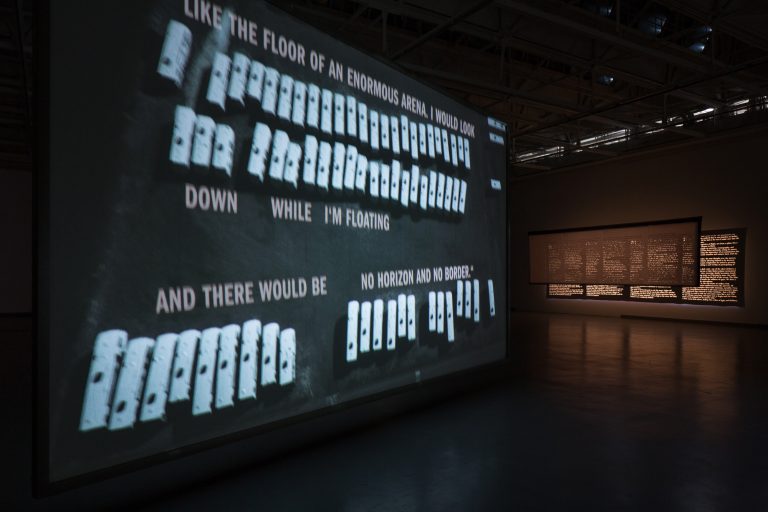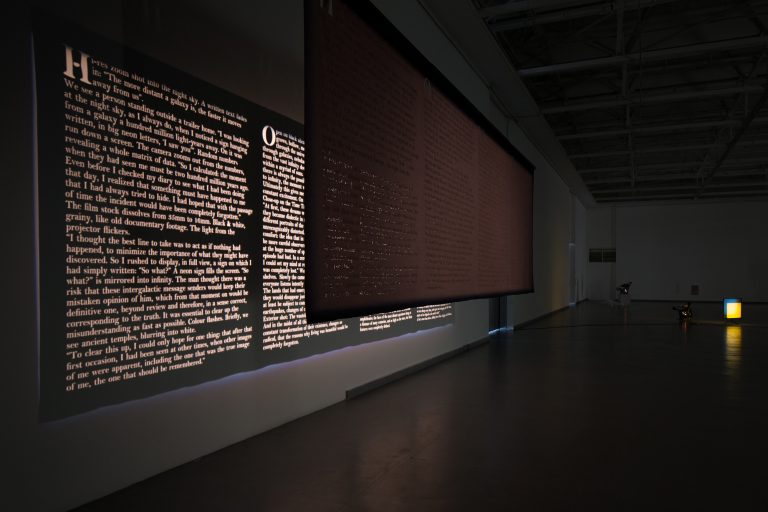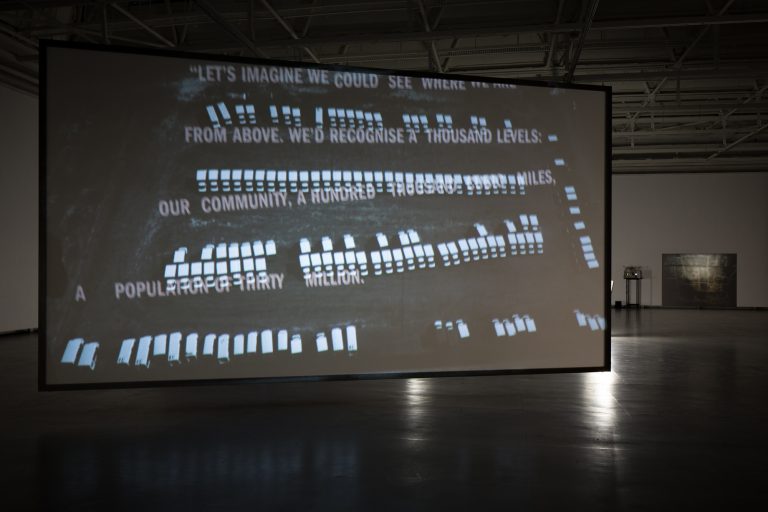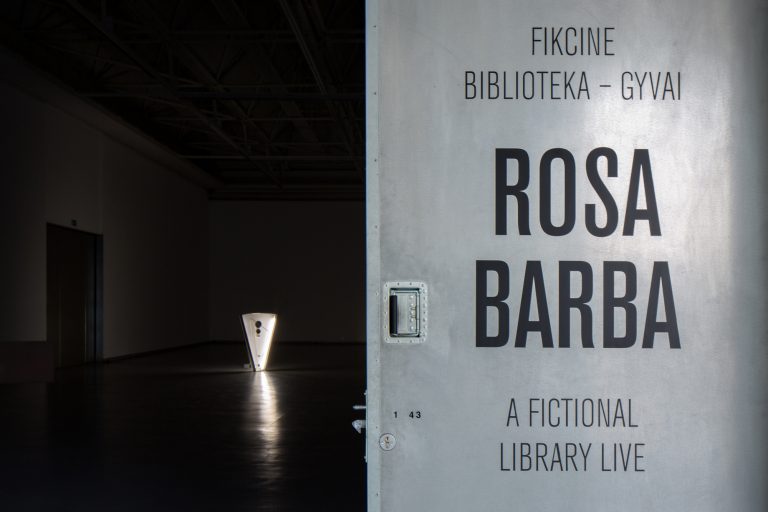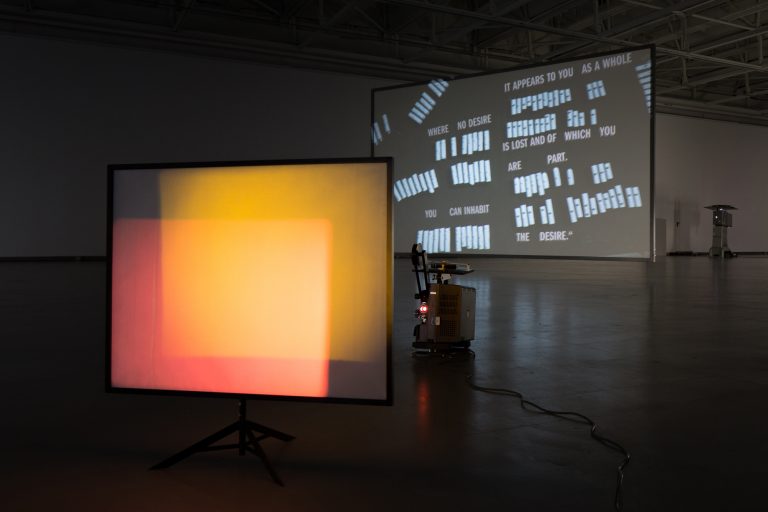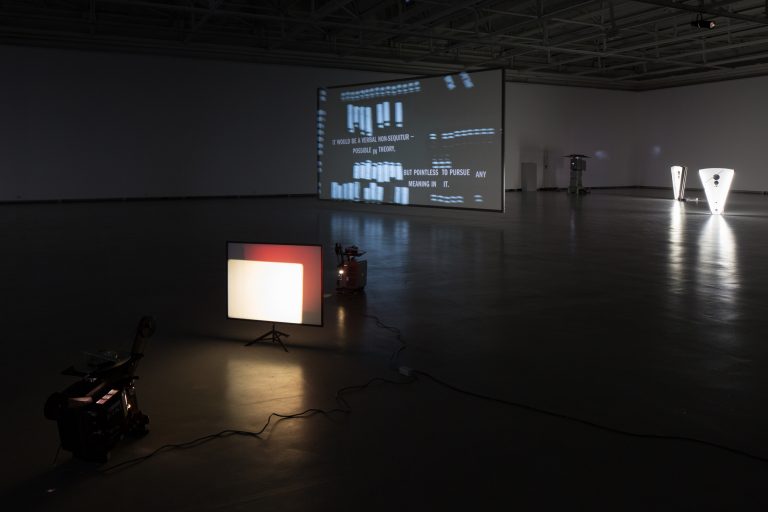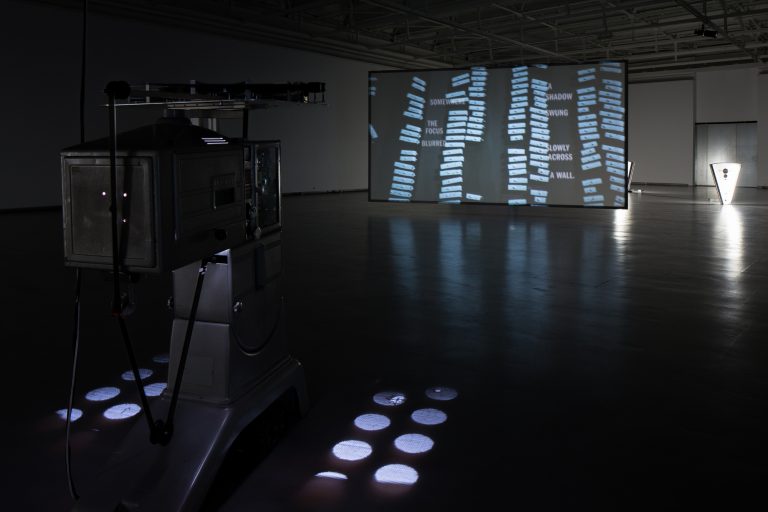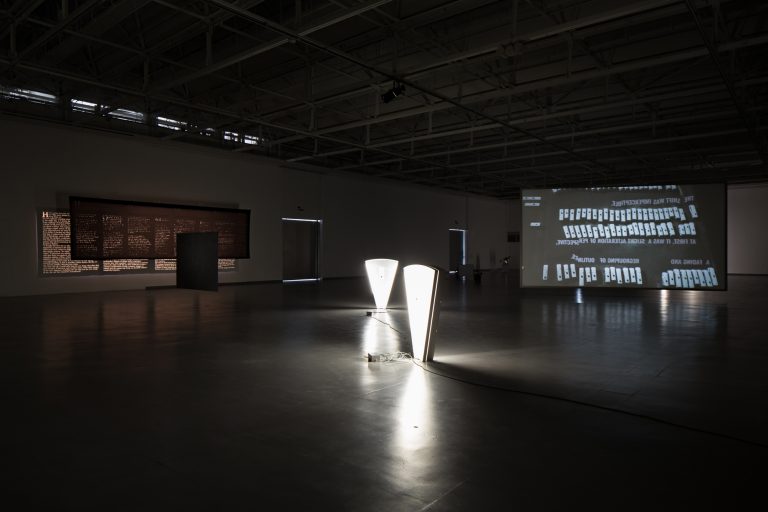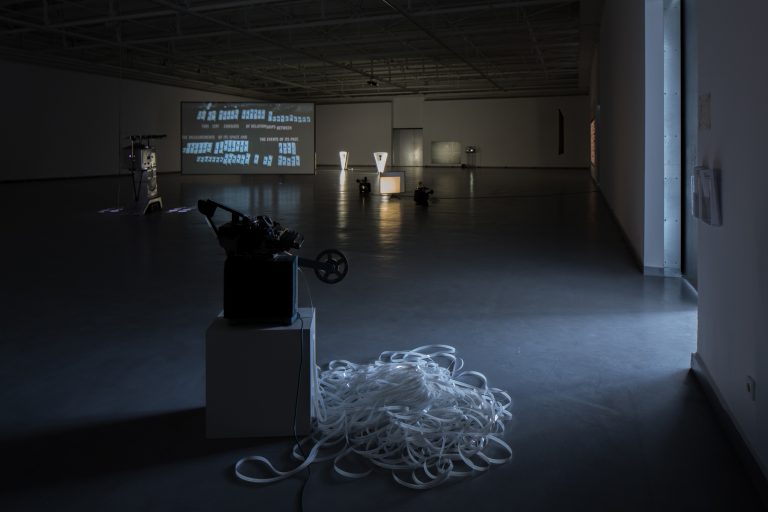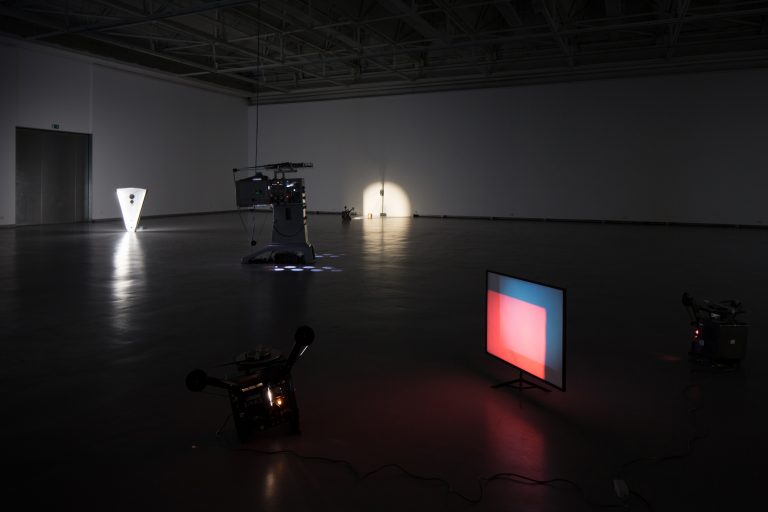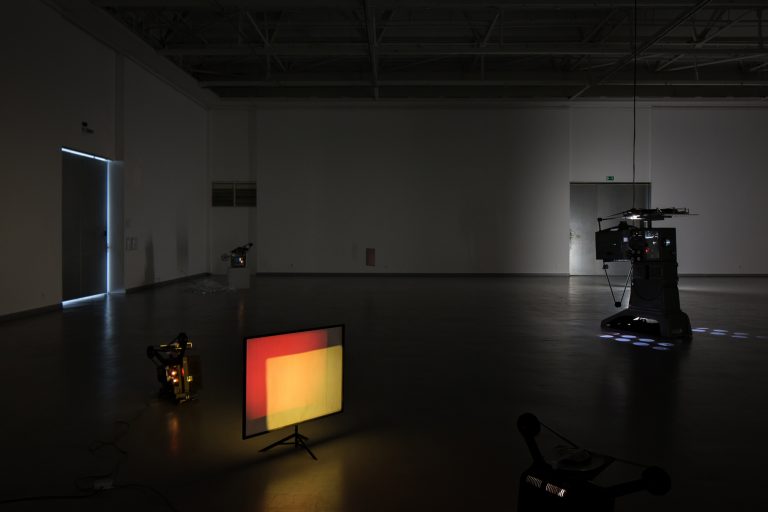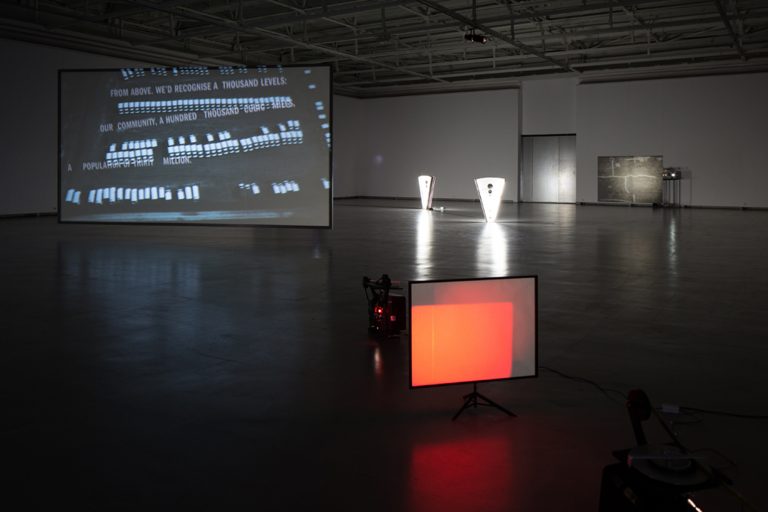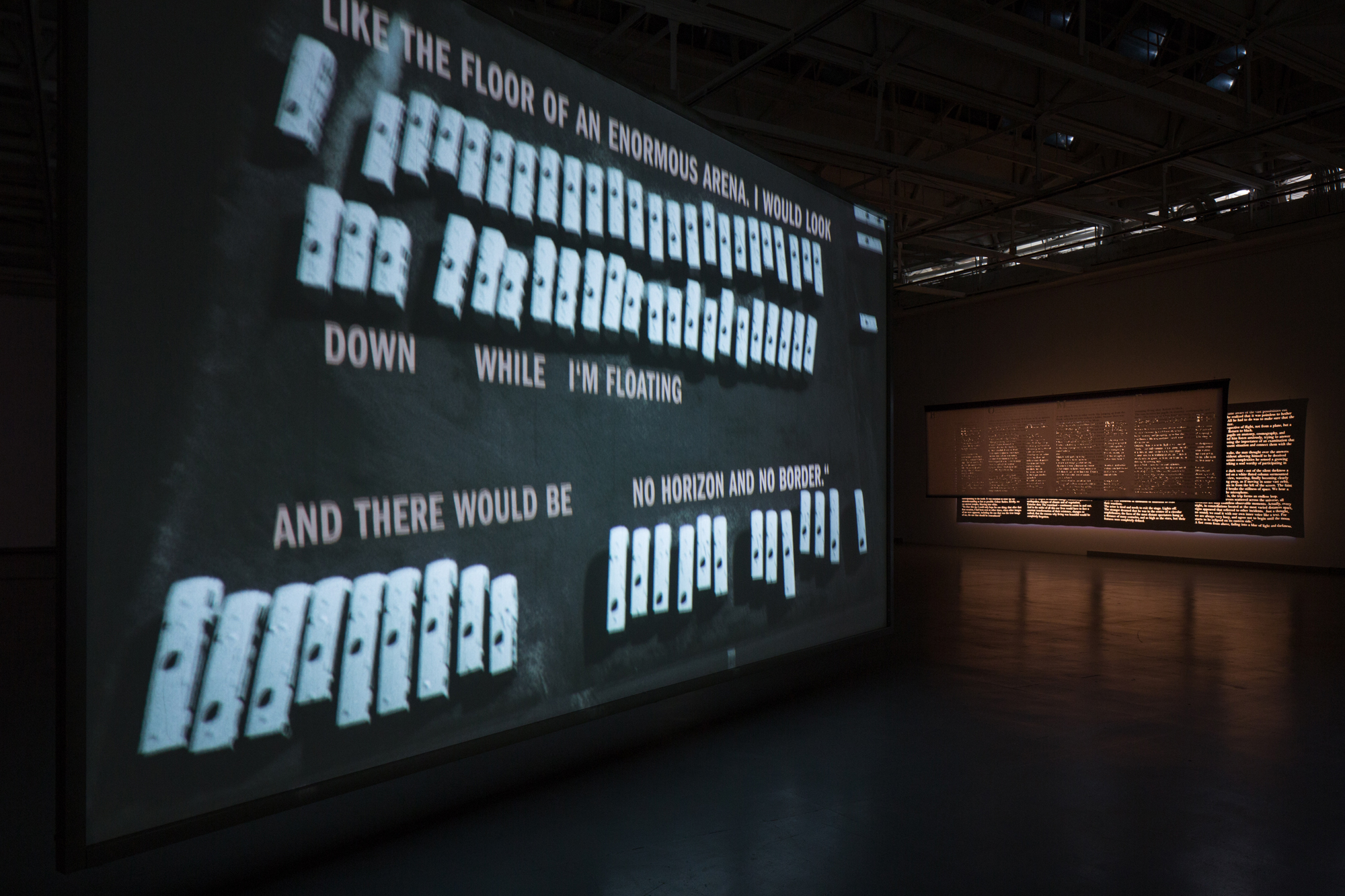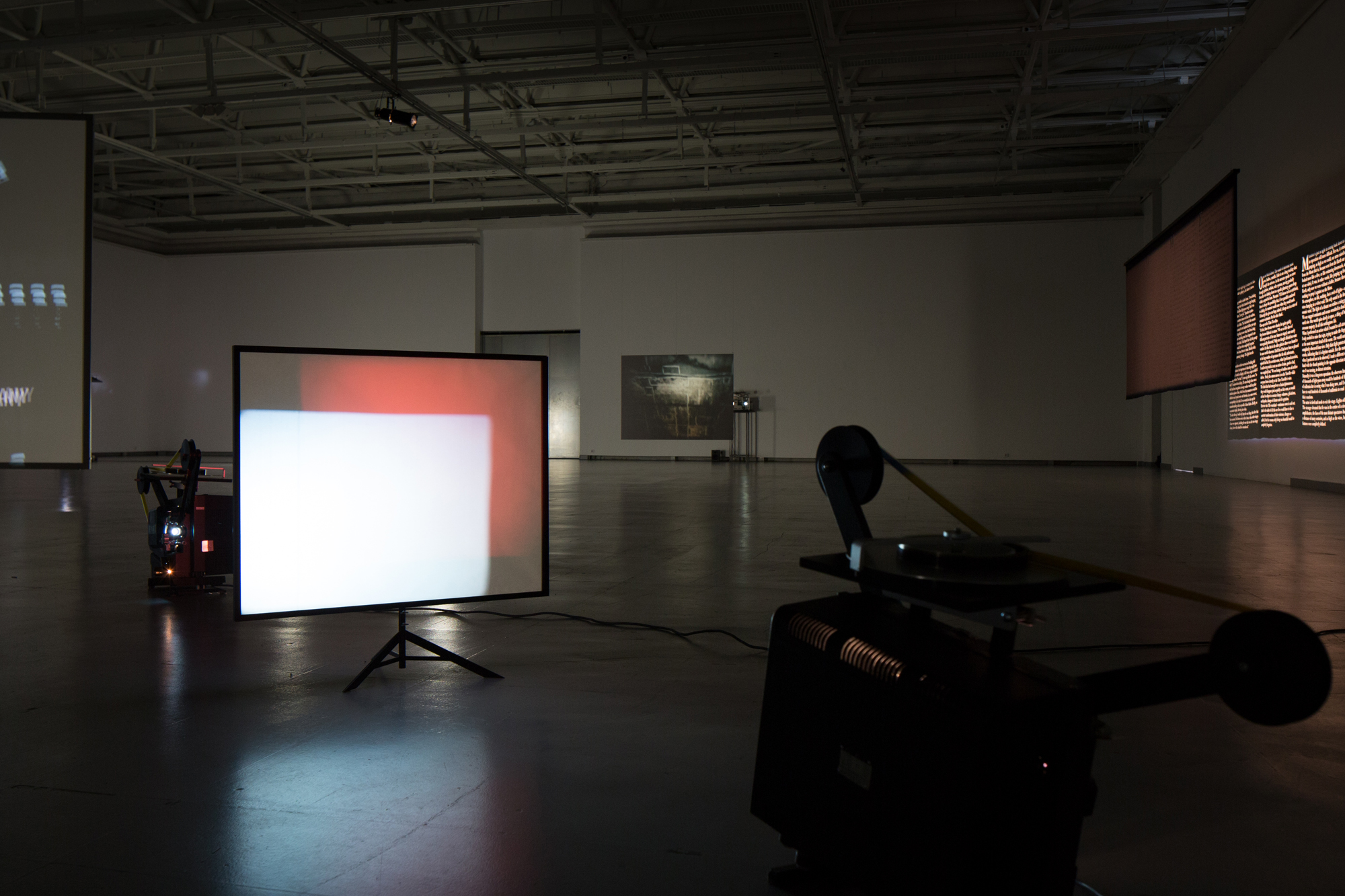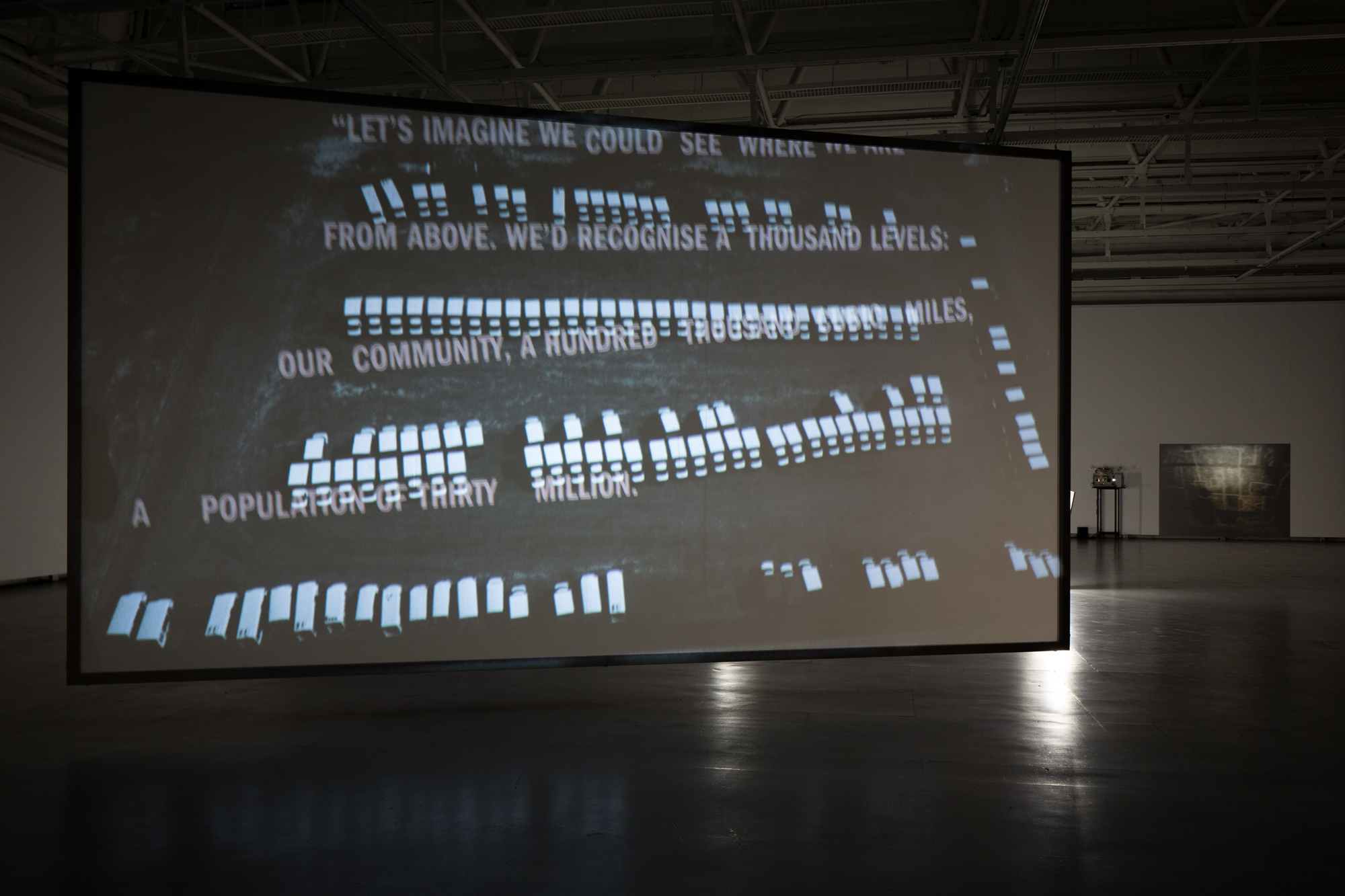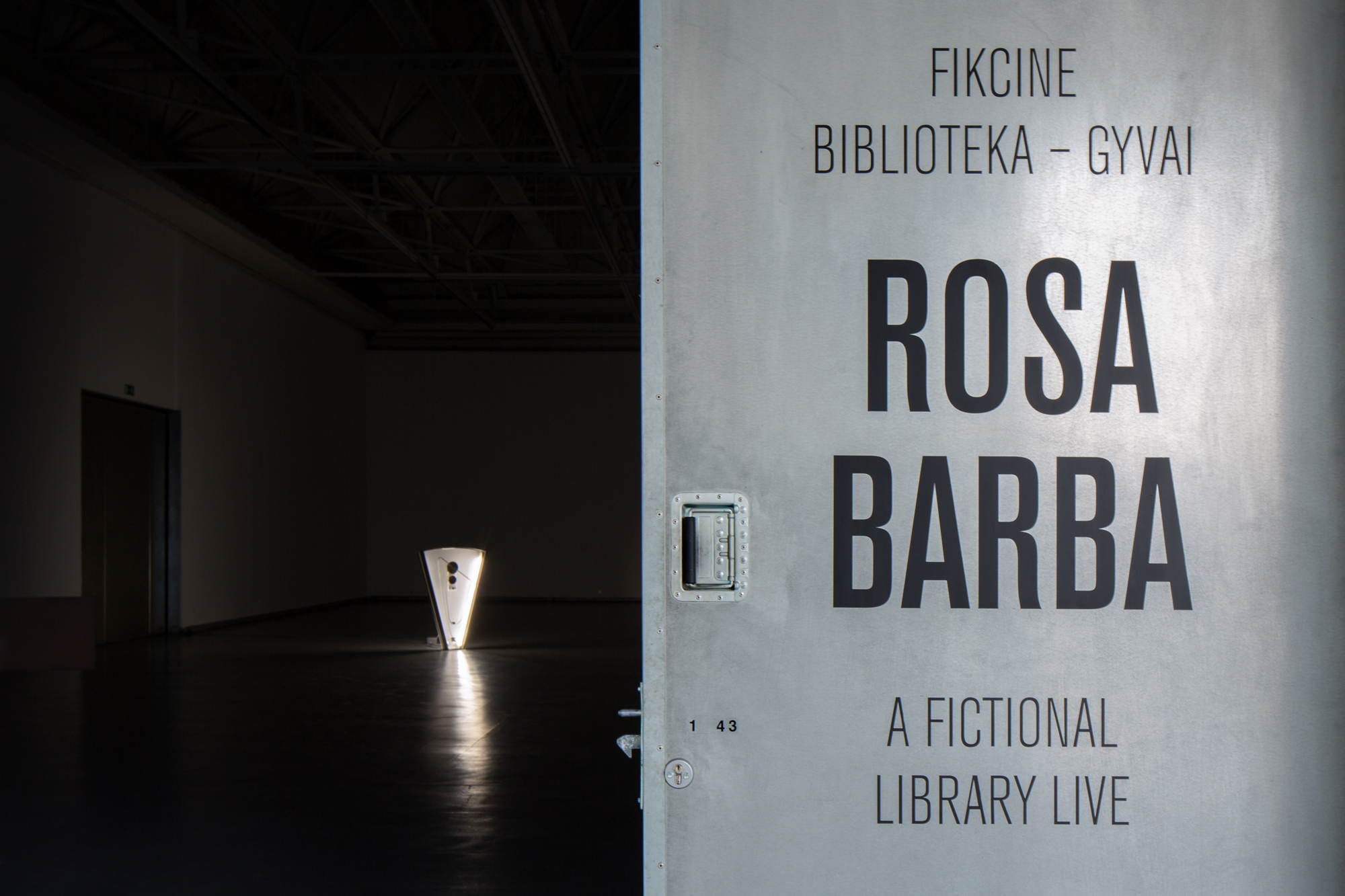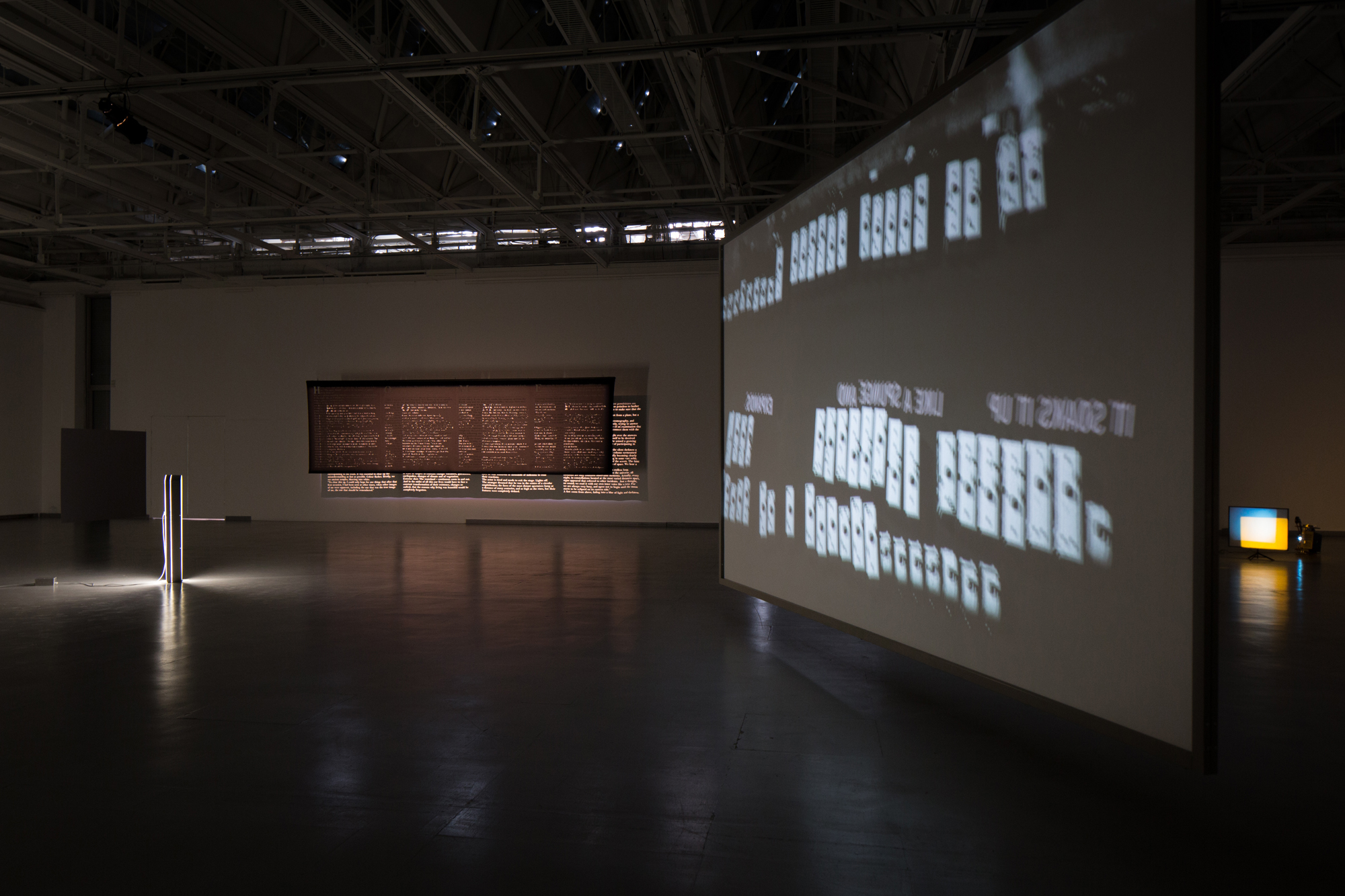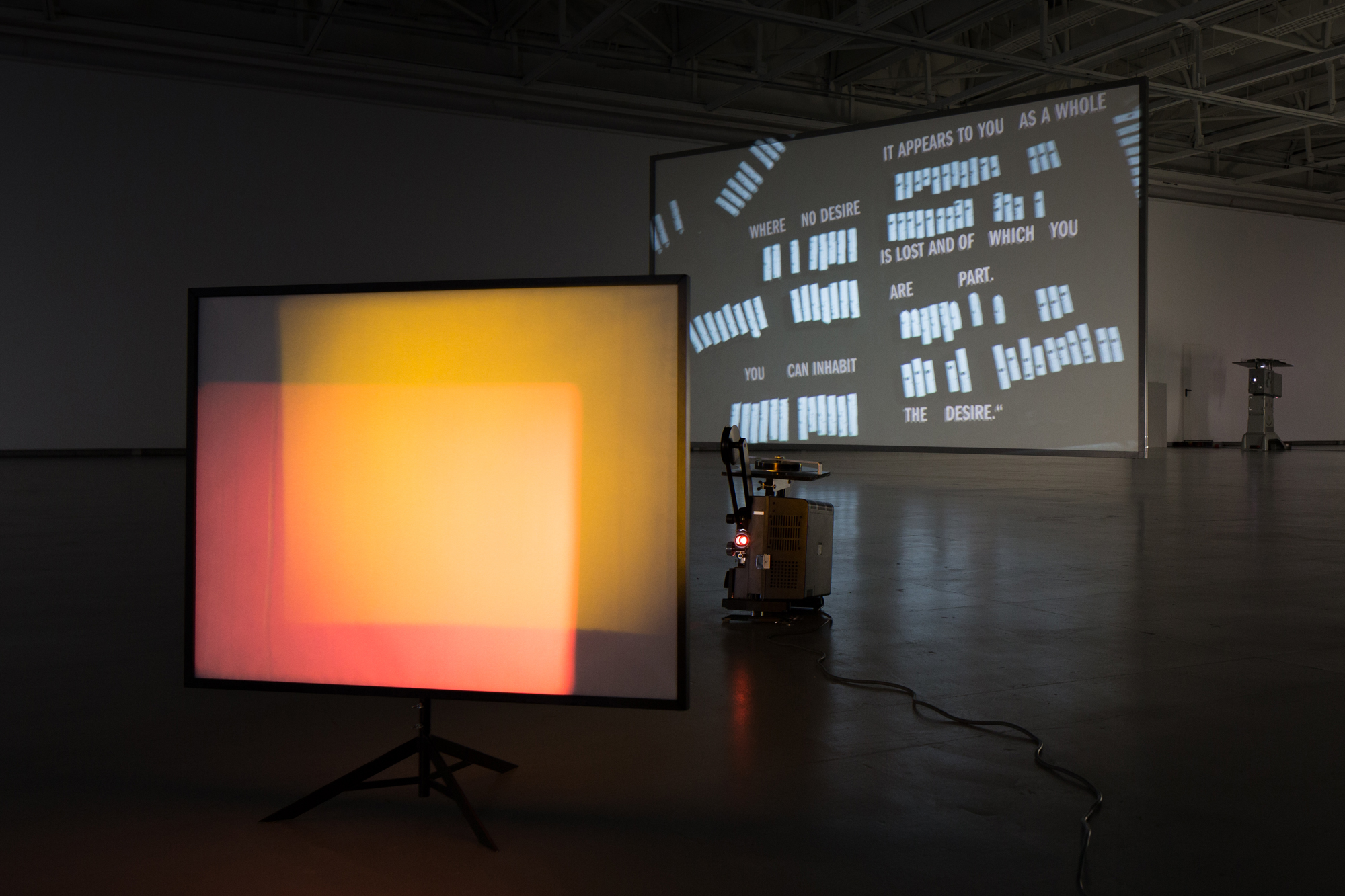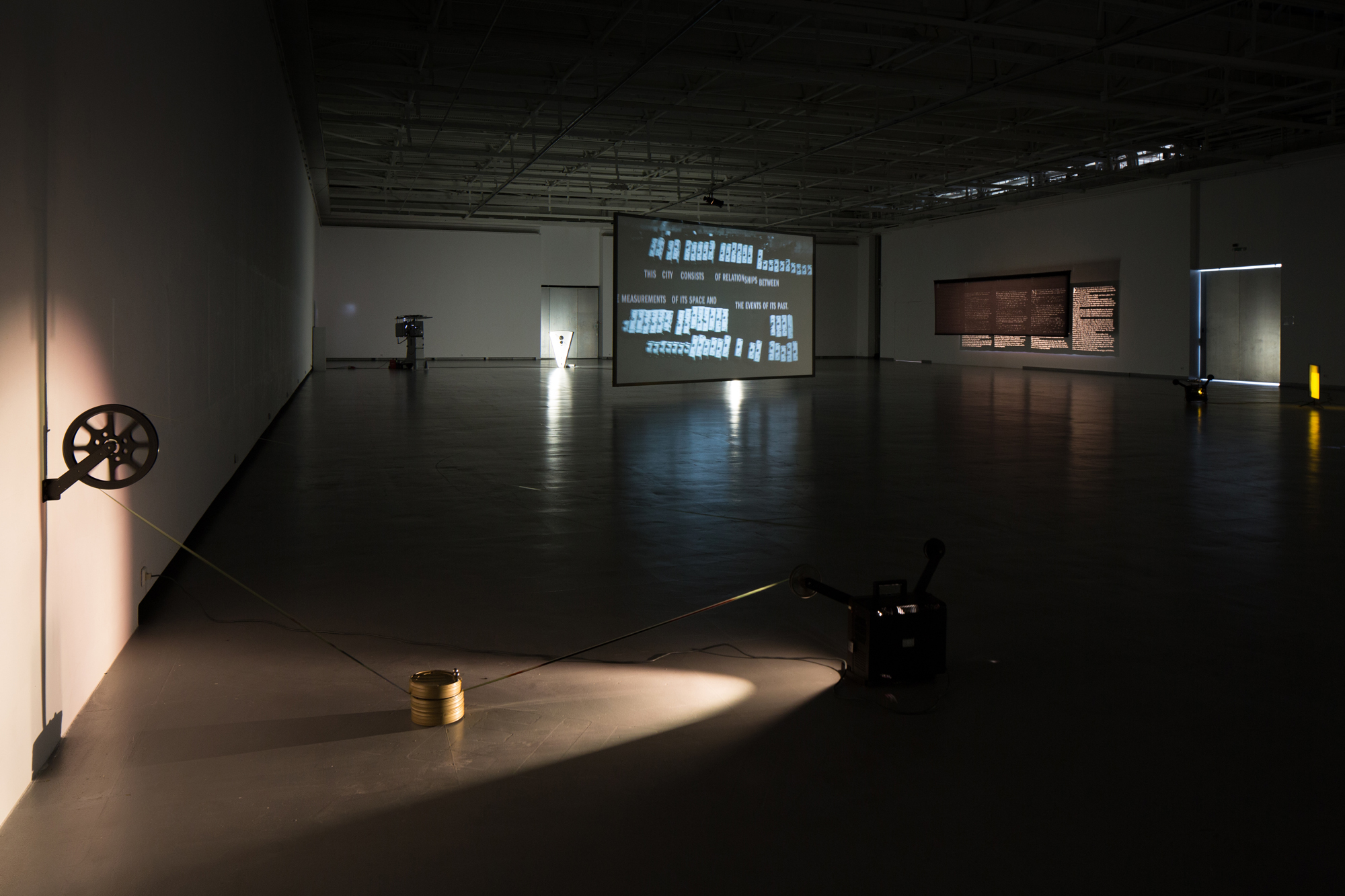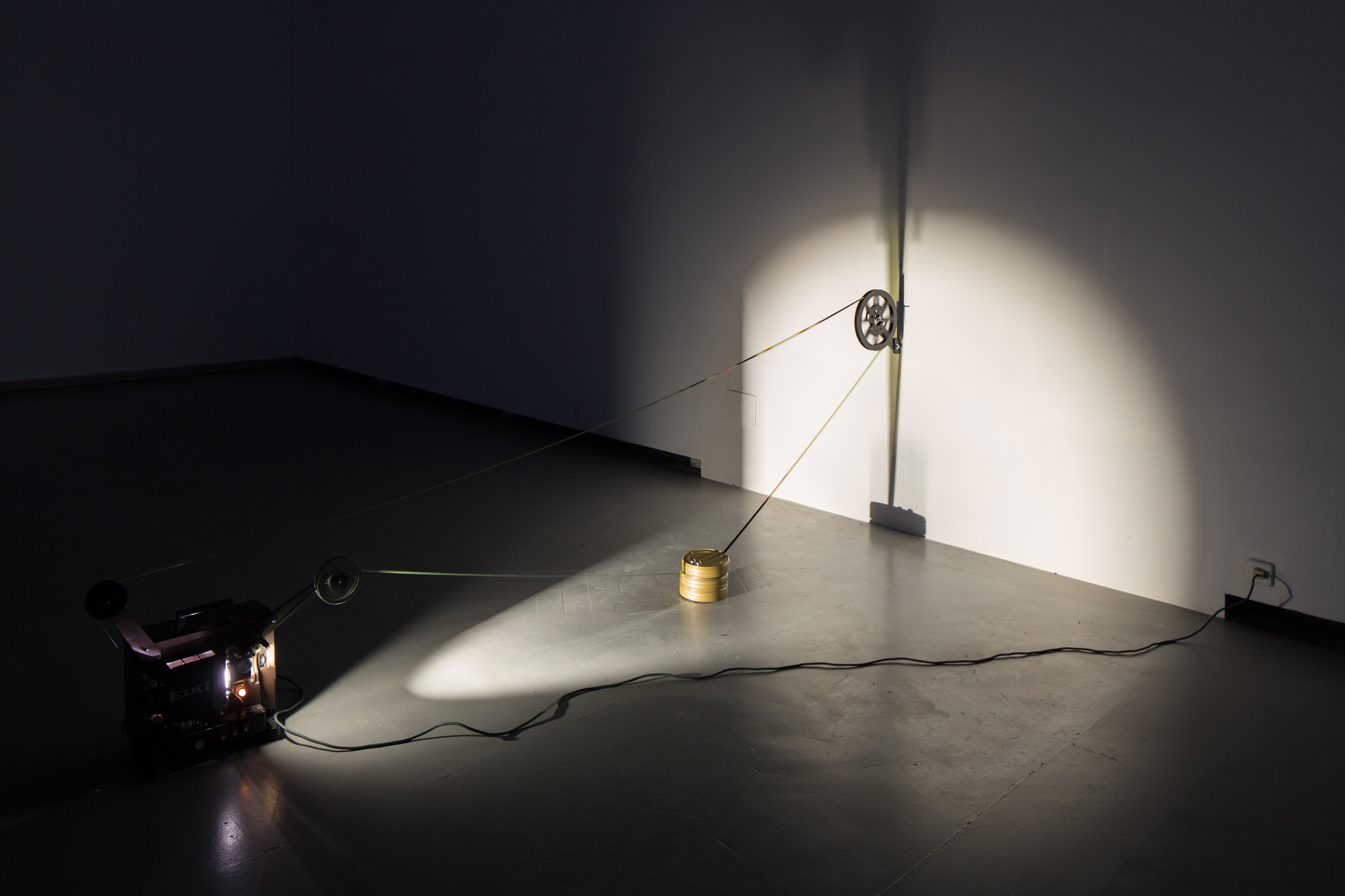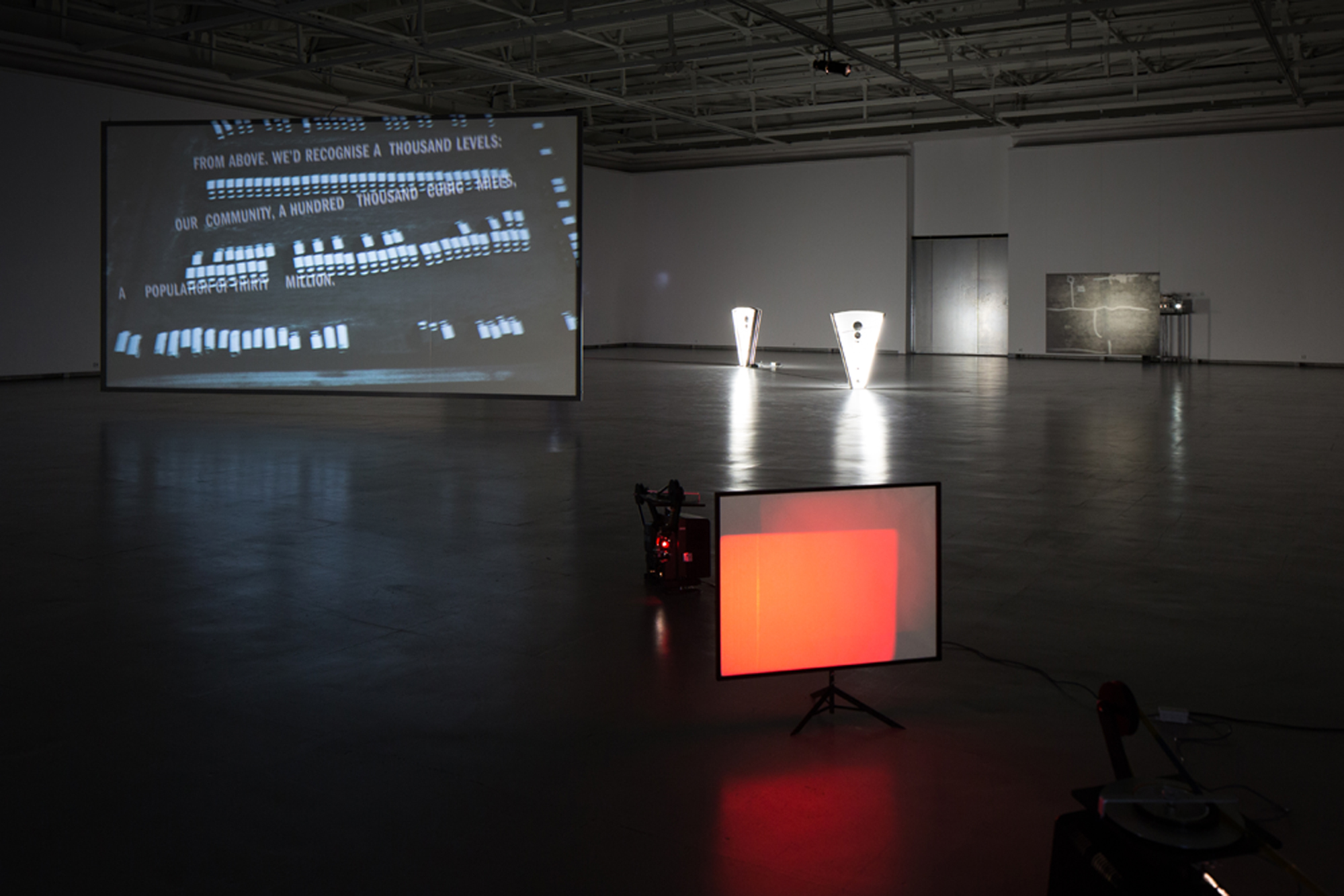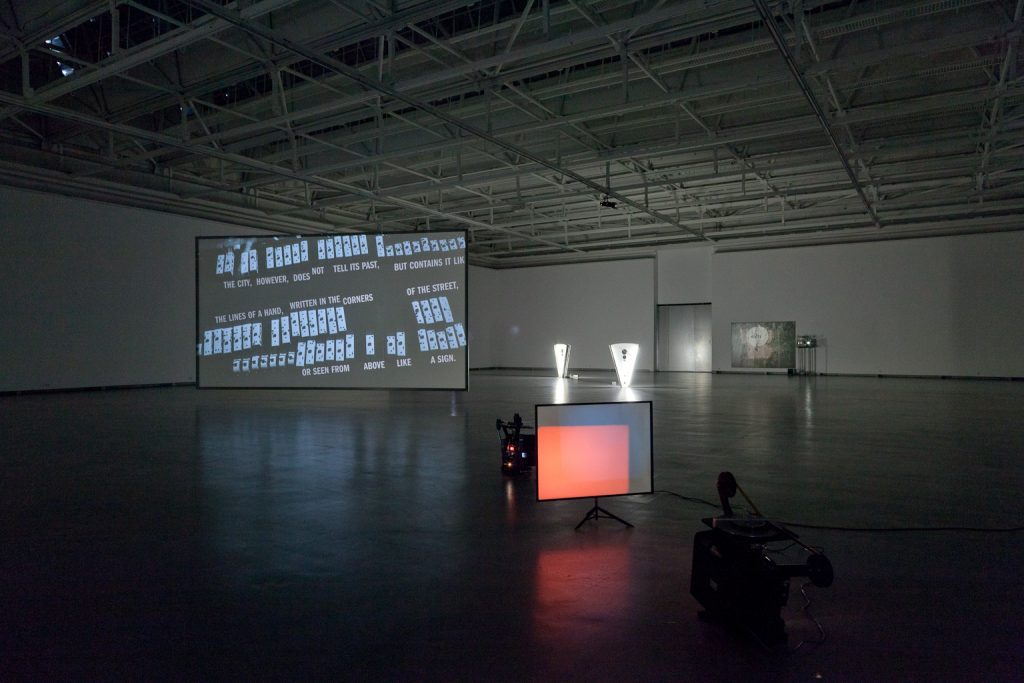
Throughout this show, Rosa Barba presents in the main space at CAC a selection of pieces where she is further developing the idea of a feature film extended into a theatrical composition of a fragmented narration with a spacial experience. These different explorations of a theatrical composition had many stations in the last few years in her work.
Barba works with different ways of fragmenting cinematic language. In her words: “I am always searching for new ways of dealing with my subjects, and orchestrating them together in the same space makes the most sense. The theme of ‘instability’ is something that all the works also have in common. The sculptural work emerges from a tension between its own elements – the result is something between a balancing act and a magic trick.
The idea of ‘transformation’ and ‘instability’ is always tangible; films are transformed into texts and texts into films. Pauses, or intervals, are used in all the works, to express a sense of lost time in the interstices between the frames. This is critical for representing movement, but unseen – its ‘discontinuity’ disappears into the continuous flow.”
Here at the CAC projected fiction is performed by different objects which are informing ideas about a new collective future. They formulate a ‘social’ need in separate independent groups yet synced by one common idea. As in her previous exhibitions, every work displays its own dynamic or beat – like a choreographed attempt at a-synchronicity – mechanical rhythms and visible successions.
The exhibition establishes a kind of choreography through several pieces made by Rosa Barba in the past four years. We enter the space by encountering Spacelength Thought (2012). Here a typewriter writes a fiction onto celluloid, in real time, slowly filling the exhibition space with printed white film. It is one endless thought which in the projection is seen as a single letter, dissolving into the material, like an archeological finding. A manic writer, constantly producing knowledge which we still need to identify.
This work continuously prints its own code, or a decoded story. It’s an author, but the text production does not adapt to a human reading routine; it extends the production time of a single word or even a single letter in this case, but at the same time moves at the pace of the celluloid.
The centerpiece of the exhibition, A Home for a Unique Individual (2013) is a double synchronised 35mm projection which shows trailer cities in the US that could be understood like “open book pages” seen from the air. The artist gave these different aerial shots to a percussionist to read them as notations and “drum” on typewriters which we hear in the space as the soundtrack for the whole orchestrated space. On the other side of the screen, a text is projected which perfectly fits the image and aligns with the trailer figures.
Some other works included in the exhibition could be considered as poetic gestures and/or linguistic quotations. Color Studies (2013) consists of two confronted 16mm projectors which are throwing changing colour fields on a common screen. Its “opaque” narrative or a sort of non-information emphasise the idea of intuition over any acquired knowledge. At the same time this piece is reaffirmed throughout the ensemble from a anti-hierarchical position and a musical composition.
Other pieces, however, play a more solemn role throughout the exhibition. It is the case of The Contemplative or the Speculative (2013). This “sculpture” on felt with cut out words is suspended from the ceiling and a spotlight illuminates the surface. A text, which is connected to the main piece A Home for a Unique Individual is projected on the wall behind the felt, offering a new “secret” reading place.
The notion of looping as a sculptural act is also inherent in Color Clocks: Verticals Lean Occasionally Consistently Away from Viewpoints (2012), in which three freestanding kinetic objects that each display in words one of the colours: red, blue and yellow. Each object moves its own colour at a different speed, creating a kinetic painting.
At the end of the room but frontally visible from the entrance of the space we encounter A Private Tableaux (2010). Here the artist navigates with her camera along sparsely lit walls of a system of tunnels on which the engineers have been marking flaws and cracks for decades. Those drawings, left by men, cover almost each section of the wall, but still this network of deficiencies prevents the structure’s breakdown. The traces of all these cracks in the arches of the tunnel, their repetitions in chalk demonstrate, just like the artworks in the storage, an indirect imprint of what waits outside, of the ruling narrations of art history in one and of the menacing traffic above ground in the other case.
“A Fictional Library – Live” is the first solo show of Rosa Barba in Lithuania.


